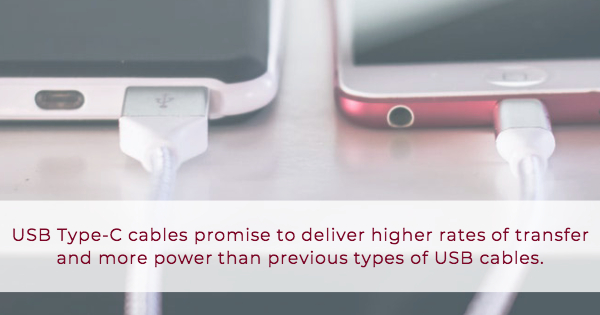
In 2016, 45% of the Earth’s population used the internet, and as of that year, 3.5 billion people around the world were internet users. Because most of the electronic devices we use involve different types of USB cable connections, it’s important to understand the different kinds of USB cables that are available, as well as what their purpose is. According to MakeUseOf, each cable type performs different tasks in order to retain compatibility and accommodate new devices. Before you buy those bulk USB cables, here’s what you need to know about each kind.
1. USB Type-A,
This is the flattened, rectangular-shaped interface at one end of almost any USB cable.
They can be found on TVs and other devices such as game consoles. USB Type-A Cables can only be inserted in one way.
2. USB Type-B.
These cables are mainly used with printers and other types of powered devices that plug into computers. This type of cable isn’t very common anymore because the majority of electronic devices have updated to accommodate smaller connections.
3. Mini- and Micro-USBs.
Before micro-USBs were developed, the Mini-USB was a smaller type of connector that was standard for use with mobile devices. You can still find these occasionally on cameras, MP3 players, and similar electronic devices.
Smaller in size than mini-USBs, Micro-USBs are currently the standard for both portable and mobile devices. Although they can still be found on many types of tablets, smartphones, game controllers, and USB battery packs, some have begun to switch to the USB Type-C cable.
4. USB Type-C.
These reversible cables are the newest USB cables. They promise to deliver higher rates of transfer than previous types of USB cables, as well as more power. In addition, they have the capability to perform multiple functions. USB Type-Cs can be seen on many of the newer laptops and smartphones, such as Pixel phones and the MacBook.
5. Lightning Cables.
This isn’t considered to be a true USB standard. However, it is the proprietary connector for Apple’s iPhone, AirPods, iPad, and other devices. Comparable in size to the USB Type-C cables, it is also standard on all Apple devices that have been released since September 2012. Apple devices that are older than this use a significantly larger 30-pin connector that is also proprietary.
With a better understanding of USB cables and their uses, you’re ready to go out and buy those bulk USB cables with confidence.



